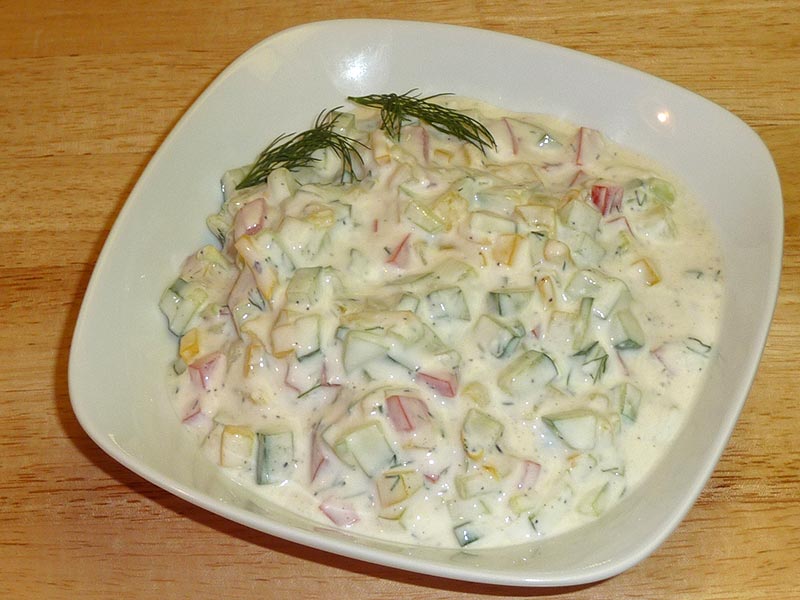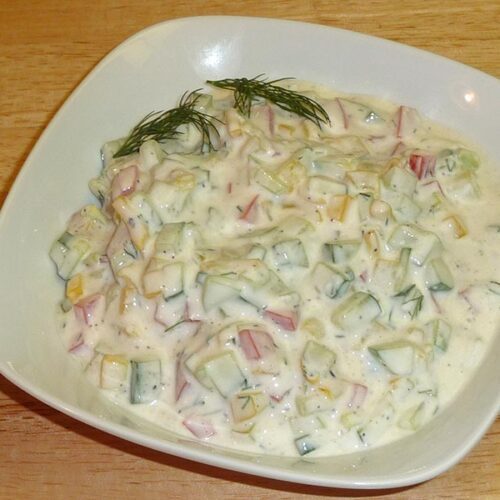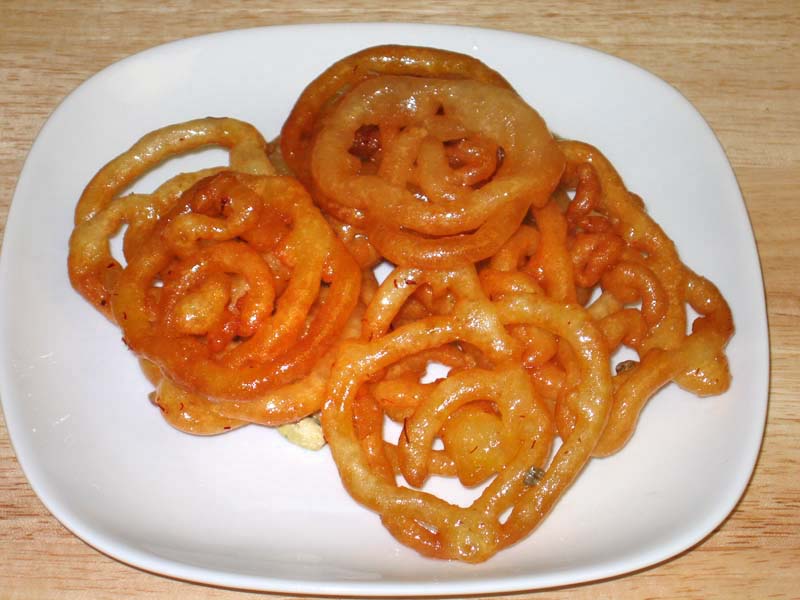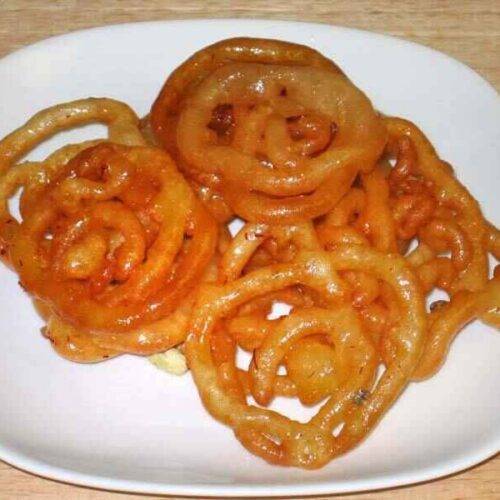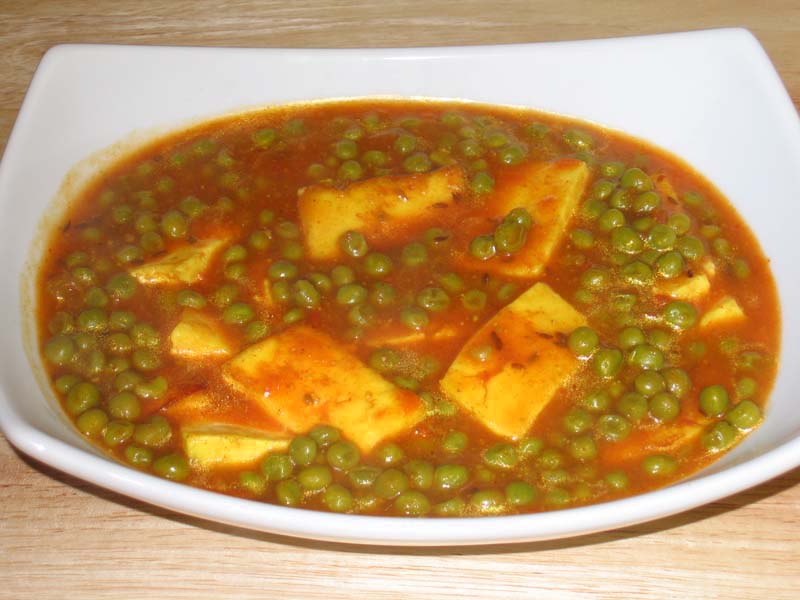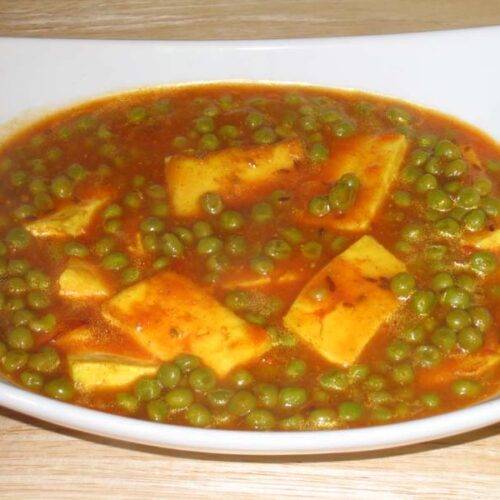Vegetable Raita
Ingredients
- 1 cup yogurt
- 1 cup cucumber finely chopped, kheera
- 1 medium tomato seeded and finely chopped
- ½ yellow bell pepper finely chopped
- 1 Tbsp dill chopped
- 1 tsp salt adjust to taste
- ½ tsp ground black pepper
- ½ tsp ground cumin seed roasted
- Pinch of paprika
- ½ tsp sugar if needed
Instructions
- Mix the yogurt well. If yogurt is thick like pudding add milk as needed to make the consistency of a yogurt drink.
- Add salt, chopped dill, black pepper, roasted cumin seed and paprika. Add sugar if yogurt is sour.
- Add chopped cucumber, tomatoes, and yellow bell pepper.
Notes
- Replace dill with chopped mint or cilantro.
- Vegetables can be adjusted to taste.
- Dry roast the cumin seeds on medium heat until they are brown and you can smell the cumin aroma.
- Grind after it cools to room temperature.
Learn How to make Vegetable Raita by Manjula’s Kitchen
What is Vegetable Raita: Raita is an accompaniment for any Indian meal and can be created in the form of Vegetable Raita, Spinach Raita, Boondi ka Raita, Cucumber Raita & Lauki ka Raita. Here we are focussing on making vegetable raita, it is a simple quick & easy, gluten free, kid friendly and nutritious yogurt-based recipe featuring vegetables and a selection of Indian spice powders. In the realm of culinary exploration, the creation of a delectable mix vegetable raita stands as a testament to the artistry that can be achieved with a few simple ingredients. This versatile dish, known for its refreshing taste and vibrant medley of flavours, offers a delightful twist to traditional raita recipes. Let’s embark on a culinary journey, unravelling the intricacies of crafting a mix vegetable raita that captivates the palate.
Mixing the Yogurt Base:
The journey begins with the heart of the mix vegetable raita—yogurt. A foundational step involves thoroughly mixing the yogurt to create a smooth and creamy base. If the yogurt happens to be thick, akin to pudding, a strategic addition of milk is introduced to attain the desired consistency reminiscent of a yogurt drink. This meticulous process sets the stage for the infusion of various flavours that will transform the humble yogurt into a culinary delight.
Seasoning the Base:
To elevate the taste profile, a symphony of seasonings is introduced. Salt, chopped dill, black pepper, roasted cumin seeds, and paprika come together in perfect harmony, each contributing its distinct note to the mix vegetable raita. This amalgamation not only imparts a depth of flavour but also showcases the versatility of the dish, making it a fitting accompaniment to various culinary creations.
Balancing Flavours:
A key consideration in perfecting the mix vegetable raita is achieving a harmonious balance of flavours. If the yogurt tends towards sourness, a touch of sugar is introduced, striking the perfect equilibrium between sweetness and tanginess. This thoughtful addition ensures that every spoonful of the raita delivers a well-rounded and satisfying taste experience.
Infusing Freshness with Vegetables:
The introduction of chopped cucumber, tomatoes, and yellow bell pepper adds a burst of freshness and colour to the mix vegetable raita. These crisp and vibrant vegetables not only enhance the visual appeal but also contribute a delightful crunch, transforming the raita into a sensory delight. The careful selection and preparation of vegetables elevate the dish from a simple condiment to a standalone culinary creation.
Variations and Personalization:
The beauty of mix vegetable raita lies in its adaptability. Variations abound, allowing for creative culinary expressions. Dill, a traditional choice, can be replaced with chopped mint or cilantro, offering a different herbal note to the ensemble. The vegetable composition can also be tailored to individual taste preferences, making the mix vegetable raita a versatile canvas for culinary innovation.
Expert Tips for Culinary Success:
No culinary journey is complete without a few expert tips. To enhance the flavour profile, dry roasting cumin seeds is recommended. This process is performed on medium heat until the seeds turn brown, releasing the distinctive aroma of cumin. Post-roasting, grinding the cumin seeds, once cooled to room temperature, ensures that the spice is evenly distributed throughout the mix vegetable raita, intensifying the overall taste experience.
Conclusion: A Culinary Symphony Unveiled
In conclusion, the process of creating a mix vegetable raita is not just a culinary endeavour; it’s a symphony of flavours, textures, and creativity. From the careful mixing of the yogurt base to the strategic addition of seasonings and the infusion of fresh vegetables, each step contributes to the creation of a culinary masterpiece. The variations and personalised touches open the door to endless possibilities, allowing individuals to tailor the mix vegetable raita to their unique taste preferences.
As we navigate the intricacies of the mix vegetable raita recipe, it becomes apparent that this dish is not merely a side accompaniment but a culinary journey that showcases the art of harmonising diverse elements. It is an invitation to explore, experiment, and savour the richness of flavours that unfold with every bite. The mix vegetable raita, with its vibrant medley and thoughtful nuances, stands as a testament to the creative potential within the realm of culinary arts.

